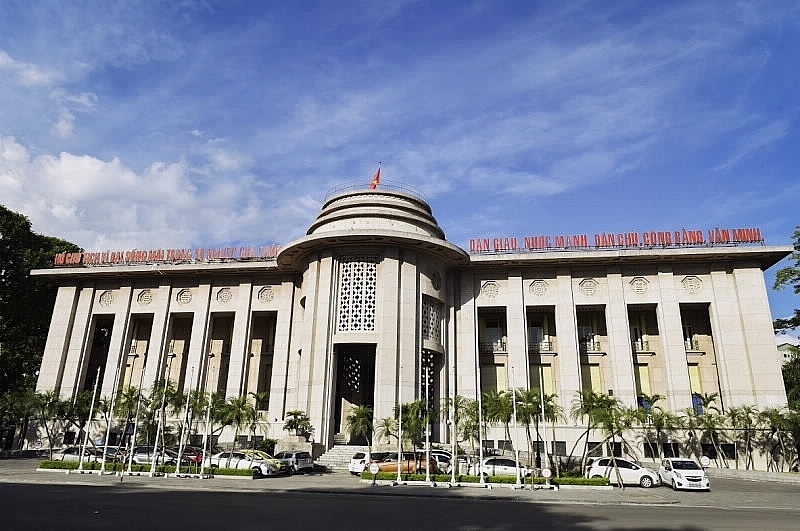| Reduce operating interest rates to promptly support businesses | |
| It is necessary to develop regulations on financial safety indicators in the field of construction and real estate |
 |
| The State Bank of Vietnam said that it will study and control interest rates in accordance with the market situation. |
Information on the management of monetary policy and new interest rates announced by the State Bank of Vietnam said that, based on the management and direction of the State Bank, up to now, the interest rate level has been stable, new interest rates have arisen tends to decrease gradually in the first month of 2023.
Specifically, the average new deposit interest rate of commercial banks is about 6.3%/year (decreased by 0.18%/year compared to the end of 2022); The average new lending interest rate in VND of commercial banks is about 9.3%/year (down 0.65%/year compared to the end of 2022).
However, the reality of the market shows that the deposit interest rate actually decreased quite sharply compared to the end of last year, but the actual lending interest rate is still relatively high, there has not been a commensurate reduction, causing difficulties for lending activities and the financial position of the business.
Facing this situation, the State Bank explained, that the banking system is the primary source of capital for the economy with a credit-to-GDP ratio at the end of 2022 of 125.34%, while capital needs for economic development are always at a high level, putting pressure on lending rates. After the Covid-19 pandemic; the economy recovered, so the capital demand for production and business increased, the credit institution system made the most of the allowed mobilisation to meet capital for the economy.
The SBV said that the difference between deposits and credits in VND is currently at VND 167 trillion; market capital utilization ratio 1 (market credit/deposit ratio 1) in VND stood at 101.45%, down from 102.28% at the end of 2022 but still at a very high level. The banking system mainly mobilizes short-term capital (about 88% of deposits are of 12 months or less). However, it still has to meet the needs of medium and long-term loans (over 52% of the system’s VND credit balance in the medium and long term) has put pressure on deposit rates.
At the same time, the pressure to increase interest rates always exists due to Vietnam’s significant economic openness, and fluctuations in financial markets and world currencies, which have a rapid and robust impact on domestic interest rates and exchange rates. The report of the State Bank stated.
According to the SBV, the world interest rate level will increase in 2022 and remain high in the first months of 2023. Major central banks around the world continue to implement the roadmap to tighten monetary policy and maintain keep interest rates high. At home, inflationary pressure exists, causing people to expect a positive real interest rate, so it is difficult for credit institutions to reduce interest rates to attract deposits, leading to high investment costs.
In addition, the State Bank also explained that the new Circular No. 02/2023/TT-NHNN dated April 23, 2023 allows for restructuring the repayment term and keeps the group of debt customers in difficulty, which means that credit institutions have not debt collection when credit institutions still have to ensure deposit payment, reducing loan sales and slowing capital turnover in the economy, thus putting pressure on the ability to balance capital and reducing room of interest rate.
At the same time, the banking system is still in the process of restructuring and handling bad debts of credit institutions, upgrading governance standards according to international practices, etc., several small-scale commercial banks maintain high deposit interest rates to keep customers also make it more challenging to reduce lending interest rates.
Moreover, according to current regulations, the consideration and decision on lending interest rate are decided by the credit institution and the customer according to the market capital supply, demand and the credit level of the customer. In case the market interest rate fluctuates or the State Bank adjusts the operating interest rates, leading to an increase or decrease in the deposit interest rate by the credit institution, or the credit institution actively adjusts the lending interest rate, for loans if the credit institution and the customer have agreed on the interest rate, the credit institution shall continue to apply the agreed interest rate until the end of the loan term or to the end of the interest payment term according to the loan agreement between the credit institution and the customer.
For these reasons, the SBV said that in the future, based on macroeconomic developments, and domestic and foreign money markets, the SBV will study and control interest rates in line with macro balance, inflation, and monetary policy objectives; at the same time, continue to encourage credit institutions to implement cost-saving solutions to reduce lending interest rates to support businesses and people to recover and develop production and business.
